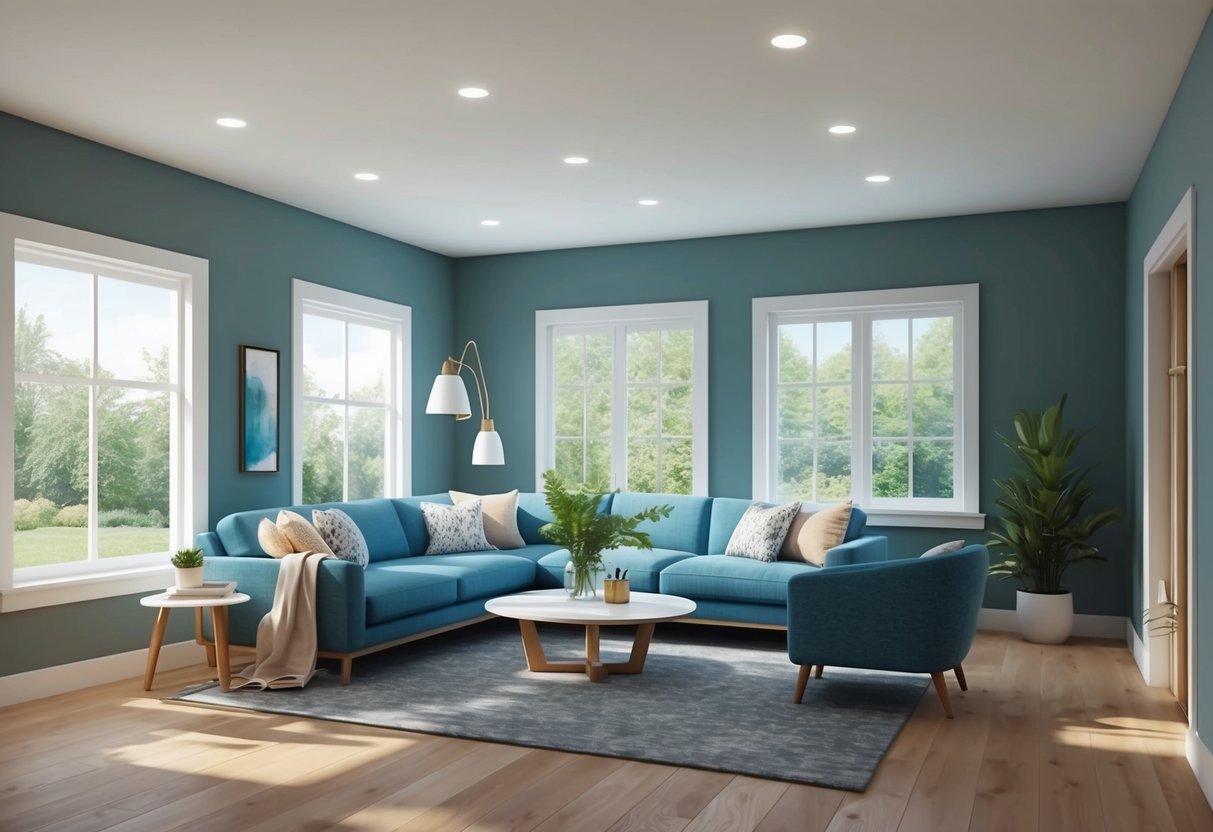
Rising utility costs and the demand for sustainable living have led homeowners to explore energy-efficient home improvements that deliver results. Whether aiming to lower monthly energy bills, increase property value, or enhance year-round comfort, making the right upgrades can create a noticeable difference.
From air sealing and added insulation to upgrading windows, smart thermostats, and high-efficiency appliances, there are proven strategies that work in nearly any climate. Tools like air sealing and insulation are especially recommended for those seeking immediate cost savings and improved comfort.
By understanding which changes have the highest impact, homeowners can prioritize upgrades that deliver both comfort and financial benefits. Exploring the best energy-efficient home upgrades means staying informed and choosing solutions that address specific energy challenges.
Energy-smart investments in things like electric heat pumps, low-flow fixtures, and modern HVAC systems can help create a more comfortable, eco-friendly, and efficient home environment.
Understanding Energy Efficiency for Homes
Energy efficiency in homes means using less energy to achieve the same level of comfort and function. Upgrading appliances, insulation, and systems can lead to significant energy savings and lower utility bills.
How Energy Consumption Impacts Utility Bills
The way a household consumes energy directly affects its monthly utility expenses. Heating and cooling systems can make up nearly half of a home’s energy use.
Poor insulation, drafty windows, and outdated appliances often lead to wasted energy and, as a result, higher bills. Making efficient choices—like using LED lighting, setting programmable thermostats, and sealing ductwork—reduces unnecessary energy loss.
Households that analyze their energy patterns and address problem areas will notice measurable energy savings within months. Efficient use of electricity, gas, and water translates directly into reduced utility costs and less strain on local power grids.
Benefits of Energy-Efficient Home Improvements
Energy-efficient home improvements have several practical benefits that go beyond saving money. Improved insulation, air sealing, and high-efficiency appliances create a more comfortable indoor environment, maintaining even temperatures and reducing drafts or humidity.
Owners of energy-smart homes notice enhanced indoor air quality and quieter operation from modern HVAC systems. These upgrades often increase property value and can qualify for local or federal incentives.
Lower energy bills free up household budgets—many families see substantial cost reductions after making key changes. Focusing on long-term results, energy-efficient improvements help reduce a home’s carbon footprint and contribute to more sustainable living.
Upgrading Home Insulation for Optimal Savings
Improving home insulation is an effective way to lower utility bills and increase in-home comfort. Choosing the right insulation, knowing where to install it, and ensuring professional installation are essential steps to maximize energy savings.
Insulation Types and Their Effectiveness
There are several types of insulation materials, each offering specific benefits for energy efficiency. Fiberglass batts and rolls are commonly used due to affordability and ease of use, making them suitable for attics and walls.
Spray foam insulation expands to fill gaps, providing excellent air sealing and thermal resistance, which is particularly useful in hard-to-reach spaces. Cellulose insulation is made from recycled materials and is effective at blocking air leaks in walls and attics.
Rigid foam boards offer a high insulating value per inch and are best suited for basement walls and exterior sheathing. Understanding the R-value—the measure of thermal resistance—is important, as higher R-values indicate better performance and more potential energy savings.
Here’s a quick comparison:
| Insulation Type | Common Uses | R-Value per Inch | Key Benefit |
|---|---|---|---|
| Fiberglass Batts | Attics, walls | 2.9 – 4.3 | Cost-effective |
| Spray Foam | Gaps, odd shapes | 3.5 – 6.5 | Air sealing |
| Cellulose | Attics, walls | 3.2 – 3.8 | Eco-friendly |
| Rigid Foam Board | Basements, exteriors | 4.0 – 6.5 | High R-value |
Where to Add Insulation in Your Home
Adding insulation to key areas is vital for improving energy efficiency and comfort. The attic is usually the top priority, as substantial heat loss often occurs through the roof.
Exterior walls also play a critical role; adding insulation here helps maintain steady indoor temperatures. Basements and crawl spaces are often overlooked but are important for reducing heat transfer from below the home.
Insulating floors above unheated spaces and around ductwork further prevents energy waste. New Yorkers interested in rebates can explore energy-saving improvement ideas offered by state programs to offset costs.
Reducing Heat Loss with Professional Installation
Professional installation is recommended for optimal results, as experts can identify air leaks and install insulation correctly. Properly sealed and insulated homes keep warm air inside during winter and block heat during summer, enhancing comfort and lowering heating and cooling costs.
Certified contractors use tools to assess where heat escapes and ensure insulation is installed to manufacturer specifications. This reduces the risk of gaps or compression, which can decrease the effectiveness of the material.
New insulation projects often pay for themselves with lower utility bills, while easing the load on heating and cooling systems and supporting long-term energy savings.